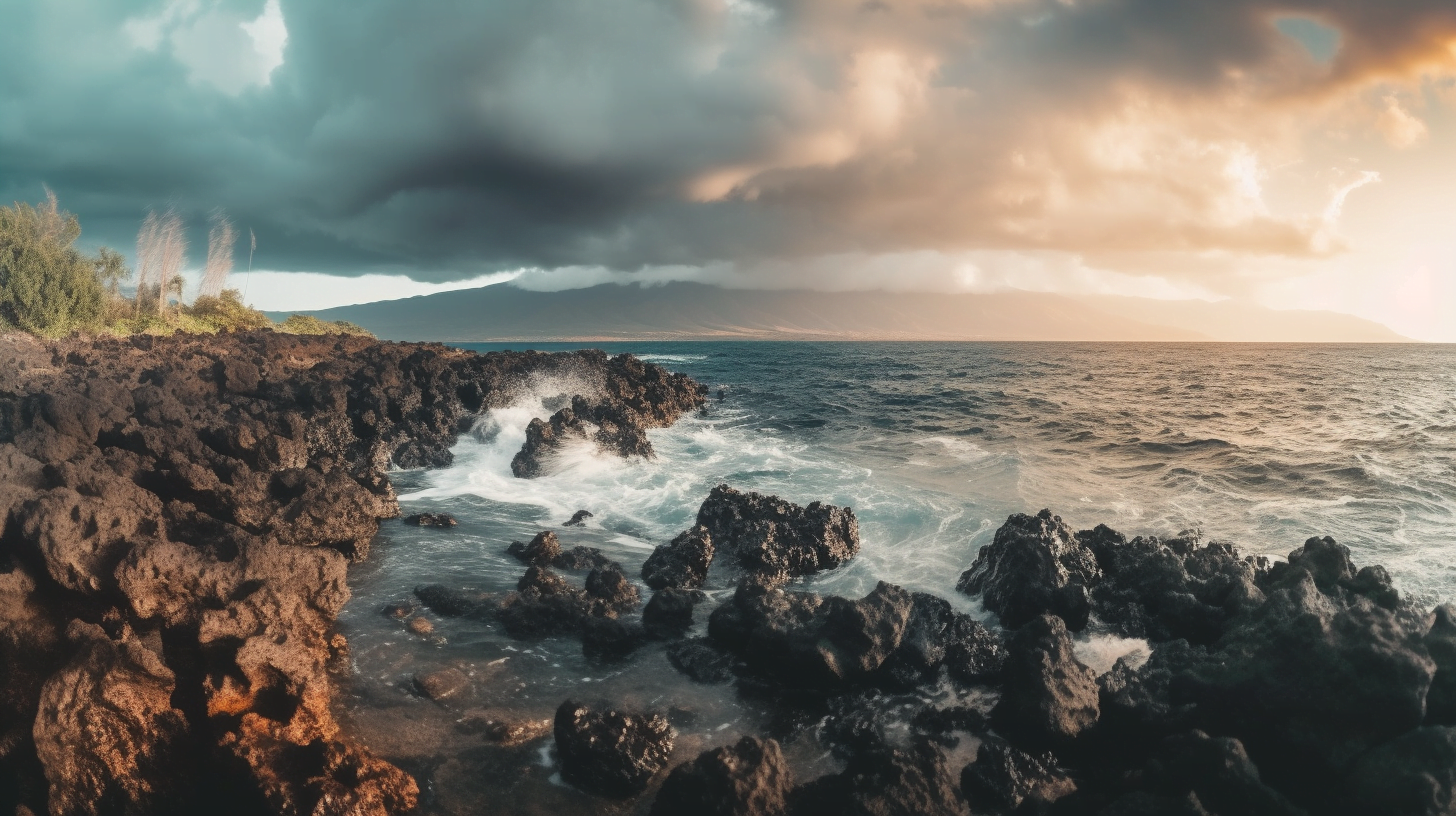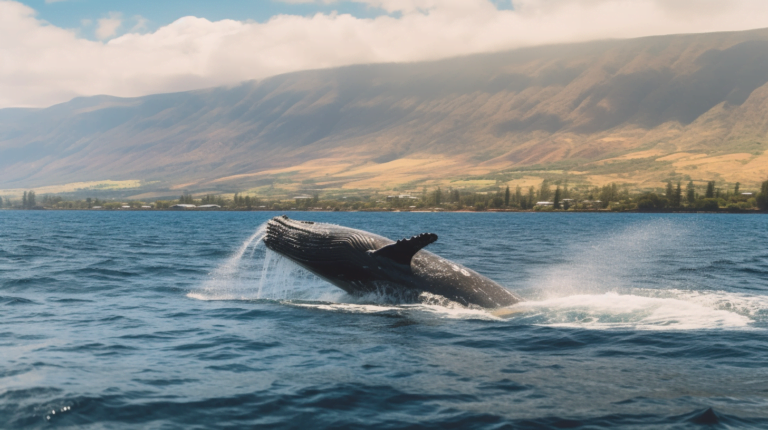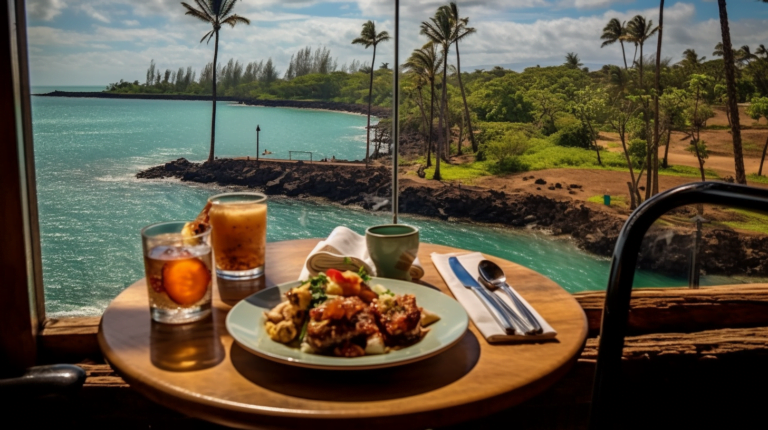Explore Lanai’s Weather Wonderland 🌴: Your Ultimate Travel Guide
As a traveler, you know that one of the most important things to consider when planning a trip is the weather and climate of your destination.
If you’re headed to Lanai, one of Hawaii’s most beautiful and secluded islands, you’ll want to be prepared for its unique weather patterns.
Despite its small size, Lanai boasts a variety of microclimates, with different regions experiencing different temperatures, humidity levels, and precipitation rates.
To help you plan your Lanai adventure, this guide will provide you with a comprehensive overview of the island’s climate and geography.
You’ll learn about Lanai’s seasons, temperature and humidity patterns, and precipitation rates, as well as what to pack and the best time of year to visit.
Whether you’re planning a romantic getaway or an adventurous outdoor excursion, understanding Lanai’s weather patterns will help you make the most of your trip.
Key Takeaways
- Lanai has a tropical/subtropical climate with temperatures ranging from mid-60s to mid-80s year-round.
- Dry season is from May to October, and wet season is from November to April.
- Visitors can enjoy outdoor activities like hiking, snorkeling, surfing, and golfing during the dry season.
- Low season offers better deals and less crowded beaches, while high season offers better weather but higher prices and crowds.
Lanai’s Climate and Geography
So, you’re planning a trip to Lanai and wondering about its climate and geography – well, let me tell you, the island is small but mighty, with a typically dry and sunny climate perfect for outdoor adventures.
Lanai is the sixth-largest of the Hawaiian islands and boasts 30 miles of beaches and shorelines. Its rugged topography is dominated by volcanic peaks and valleys, with the highest point being Lanaihale at 3,366 feet.
The island’s climate is defined as tropical or subtropical, with temperatures ranging from the mid-60s to mid-80s year-round. The dry season runs from May to October, while the wet season occurs from November to April.
Despite its small size, Lanai offers a plethora of outdoor activities such as hiking, snorkeling, surfing, and golfing. Its diverse landscape provides a unique backdrop for these activities, from the towering cliffs of the Munro Trail to the secluded beaches of Hulopoe Bay.
Understanding Lanai’s seasons is essential when planning your trip. While the dry season offers plenty of sunshine and warm temperatures, it’s also the peak tourist season, which means higher prices and more crowds. On the other hand, the wet season may bring occasional rain showers, but it also means fewer tourists and lower prices.
No matter what season you choose to visit, Lanai’s climate and geography offer the perfect setting for a memorable vacation.
Understanding Lanai’s Seasons
Get ready to experience the beautiful changes in Lanai’s seasons, from warm and sunny summers to cool and rainy winters. Lanai’s seasons can be divided into two main categories: dry and wet.
The dry season, which runs from May to October, brings warm temperatures and little rainfall. The wet season, from November to April, brings cooler temperatures, higher humidity, and more rainfall.
Despite the differences in weather conditions, you can still enjoy outdoor activities and local festivities all year round. During the dry season, you can explore Lanai’s beaches and go swimming, snorkeling, or diving. You can also hike the island’s trails or play a round of golf at one of its world-class courses.
As for local festivities, the dry season is when Lanai hosts its annual Pineapple Festival, a celebration of the island’s history as a major pineapple producer.
During the wet season, you can still enjoy the outdoors by going on scenic drives or visiting cultural sites such as the Lanai Culture and Heritage Center. You can also attend the Lanai Slack Key Festival, a music event featuring some of Hawaii’s best slack key guitar players. And if you don’t mind the rain, you can still go hiking or explore Lanai’s waterfalls.
Overall, Lanai’s seasons offer a variety of experiences for travelers to enjoy.
As you prepare to experience Lanai’s seasons, it’s important to note that temperature and humidity can vary depending on the time of day and location on the island. In the next section, we’ll delve into more details about Lanai’s weather patterns and how they may affect your trip.
Temperature and Humidity
As you explore this beautiful island, it’s fascinating to note that Lanai’s temperature can range from a comfortable 70 degrees Fahrenheit during the day to a cool 50 degrees Fahrenheit at night, providing a unique experience for visitors. This temperature variation is largely due to the effects of elevation.
The higher you climb Lanai’s mountains, the cooler the temperature becomes. It’s important to keep in mind that the weather can change quickly on Lanai, so it’s wise to dress in layers and be prepared for any sudden temperature drops.
Hydration is also crucial when exploring Lanai’s diverse terrain. The island’s humidity can vary greatly, with drier conditions near the coast and higher humidity in the mountains. Regardless of the humidity level, it’s important to drink plenty of water to prevent dehydration.
This is especially true for visitors who plan to explore Lanai’s hiking trails or participate in outdoor activities, as the combination of physical activity and higher temperatures can quickly lead to dehydration. In addition to staying hydrated, it’s also important to take precautions against the sun’s rays.
Lanai is known for its beautiful, sunny weather, but visitors should take care to protect their skin and eyes from the sun’s harmful effects. Wearing sunscreen, sunglasses, and a hat can help prevent sunburn and other sun-related skin damage. By staying hydrated and taking proper sun precautions, visitors can fully enjoy all that Lanai’s temperature and climate have to offer.
As you prepare to explore Lanai’s weather and climate, it’s important to consider the island’s precipitation patterns. While Lanai is known for its sunny weather, it’s not immune to rainfall. In fact, the island’s mountains receive some of the highest amounts of rainfall in Hawaii.
In the next section, we’ll take a closer look at Lanai’s precipitation patterns and what visitors can expect when it comes to rain on the island.
Precipitation
Exploring Lanai’s precipitation patterns reveals the island’s diverse ecology and how it shapes the landscape. The island experiences two distinct seasons: a dry season from May to September and a wet season from October to April.
During the wet season, Lanai receives most of its annual rainfall, with an average of 1-2 inches per month. However, rainy days are sporadic and often short-lived, allowing for plenty of time to enjoy water activities. If you’re planning a trip to Lanai during the wet season, it’s important to be prepared for occasional rain showers. Although the island is known for its sunny weather, it’s still a good idea to pack a lightweight rain jacket and waterproof shoes for any outdoor activities.
On the other hand, if you’re visiting during the dry season, be prepared for hot and dry weather, with temperatures reaching up to 90°F. Don’t forget to bring plenty of sunscreen and hydrate frequently.
Despite the occasional rain showers, Lanai’s precipitation patterns create a unique and diverse landscape. From lush tropical rainforests to sparkling waterfalls, the island’s natural beauty is a testament to its climate.
Whether you’re seeking adventure or relaxation, Lanai’s weather and climate provide the perfect backdrop for any vacation. So, pack your bags and get ready for an unforgettable trip to this Hawaiian paradise.
What to Pack
Don’t forget to pack your rain jacket and waterproof shoes for any outdoor adventures on Lanai, where occasional rain showers can add to the island’s lush and diverse landscape. However, Lanai’s weather is generally warm and sunny, so also pack your beach essentials like swimsuits, sunglasses, and sunscreen.
The island’s beaches are beautiful and inviting, but the sun can be intense, so make sure to protect your skin. When dressing for outdoor activities, keep in mind that Lanai’s climate is tropical, so lightweight and breathable clothing is recommended. Opt for comfortable clothes and shoes that can handle hiking, biking, and exploring the island’s rugged terrain.
Also, bring a hat to shield your face from the sun and insect repellent to ward off pesky mosquitoes. As you prepare for your trip to Lanai, remember to pack for the island’s unique weather and climate.
In the next section, we will discuss the best time to visit the island and how to plan your itinerary accordingly.
Best Time to Visit
When planning your trip to Lanai, it’s important to consider the best time to visit. The island experiences a high season from December to March, when the weather is mild and dry. It also has a low season from April to November, when the weather can be a bit more unpredictable.
Additionally, there are several special events throughout the year that may influence your travel plans. For example, there’s the Lanai Pineapple Festival in July or the Hawaii Food and Wine Festival in October.
High Season vs. Low Season
If you’re planning a trip to Lanai, you’ll want to know that high season means more crowds and higher prices, but also better weather: ‘April showers bring May flowers.’
Here’s a cost comparison for high season vs. low season:
- Accommodations: During high season (December to March), hotel rates can increase by 50% or more. In low season (April to November), you can find deals for as much as 40% off.
- Activities: High season is when the most popular activities are available, such as whale watching and golfing. However, low season offers better deals and less crowded beaches.
- Dining: Restaurants often have higher prices during high season due to increased demand. In low season, you can find discounts and specials.
Despite the higher costs and bigger crowds, high season is still a popular time to visit Lanai due to the reliable weather. However, if you’re looking to save money and avoid the tourist crowds, consider visiting during low season.
Now, let’s move on to special events happening throughout the year on Lanai.
Special Events
You’ll want to make sure to check out the special events happening on Lanai throughout the year. The island traditions and cultural festivals are a great way to experience the local culture and immerse yourself in the community.
One of the most popular events is the Pineapple Festival, which celebrates the island’s history as a major pineapple producer. This festival features live music, food vendors, and a parade. Another event to look out for is the Lanai Ukulele Festival, which showcases the island’s love for music and the ukulele. This festival brings together local and international musicians for a day of performances and workshops.
Other events include the Lanai Film Festival, the Lanai Rodeo, and the Lanai Slack Key Guitar Festival. These events are a great way to experience the unique culture of Lanai and create lasting memories. As you plan your trip, be sure to check the event calendar to see what’s happening during your visit.
Now that you know about the special events happening on Lanai, it’s important to also consider tips for staying safe during your travels.
Tips for Staying Safe
When visiting Lanai, staying safe should be a top priority. Whether you’re planning on swimming in the ocean, spending time in the sun, or exploring the island’s wildlife, it’s important to know how to stay safe.
To help you prepare, we’ll be discussing key tips for water safety, sun safety, and wildlife safety in this subtopic. Keep reading to ensure you have all the information you need to enjoy your trip to Lanai safely and responsibly.
Water Safety
Swimming in Lanai’s waters can be refreshing, but it’s important to heed the warnings and understand the symbolism of the ocean’s unpredictable nature. Before you plunge into the water, be sure to check the ocean conditions and swimming precautions.
Rough currents, large waves, and dangerous rip tides can be hazardous even to the most experienced swimmer. If you’re unsure of the water safety conditions, it’s best to avoid swimming altogether or seek advice from a lifeguard.
To stay safe while enjoying the water, here are some important swimming precautions to keep in mind:
- Always swim with a buddy. Avoid swimming alone in case of an emergency.
- Watch for warning signs or flags posted by the lifeguard. These signs indicate the current ocean conditions and potential hazards.
- Don’t swim under the influence of alcohol or drugs. It can impair your judgment and reaction time, making it harder to respond to dangerous situations.
Now that you’re aware of the swimming precautions, it’s time to learn about sun safety.
Sun Safety
Don’t forget to protect your skin from the intense Hawaiian sun by following these sun safety tips.
First, ensure you apply sunscreen with an SPF of at least 30 before going outside. Reapply every two hours, or immediately after swimming or sweating.
It’s also important to wear protective clothing, such as a wide-brimmed hat and lightweight, long-sleeved shirts and pants. This will not only provide additional protection from the sun’s harmful rays but also help keep you cool in Lanai’s warm climate.
Proper sun safety is crucial for enjoying your time on Lanai without risking sunburn or long-term skin damage. But it’s not the only safety concern to be aware of.
As you explore the island, it’s important to also take precautions when encountering wildlife.
Wildlife Safety
You’ll want to keep your eyes peeled for native wildlife while exploring Lanai, as they can often be found in unexpected places. Here are a few things to keep in mind when encountering wildlife:
- Stay a safe distance away from any animals you encounter. This will help you avoid any potentially dangerous situations.
- Never feed or approach any wildlife. This can disrupt their natural behavior and cause them to become dependent on humans for food.
- Be aware of your surroundings and any signs of animal behavior. If an animal appears agitated or defensive, it’s best to give them plenty of space and avoid any further interaction.
- Respect the natural environment and leave everything as you found it. This will help preserve Lanai’s unique wildlife for future generations to enjoy.
By following these guidelines, you can safely enjoy Lanai’s wildlife without causing harm to the animals or the environment. Remember, wildlife encounters can be unpredictable, so it’s important to always be prepared and cautious when exploring the island.
Conclusion
Congratulations! You’re now equipped with all the necessary information to prepare for your trip to Lanai.
Remember, Lanai’s climate and geography play a crucial role in determining the best time to visit. With average temperatures ranging from 70°F to 85°F, you can expect warm and pleasant weather throughout the year.
However, keep in mind that the island experiences a rainy season from November to March, so pack accordingly. Don’t forget to bring sunscreen, a hat, and comfortable shoes for exploring the island’s breathtaking scenery.
As the saying goes, “there’s no such thing as bad weather, only unsuitable clothing.” So, pack wisely and enjoy your trip to the fullest!







